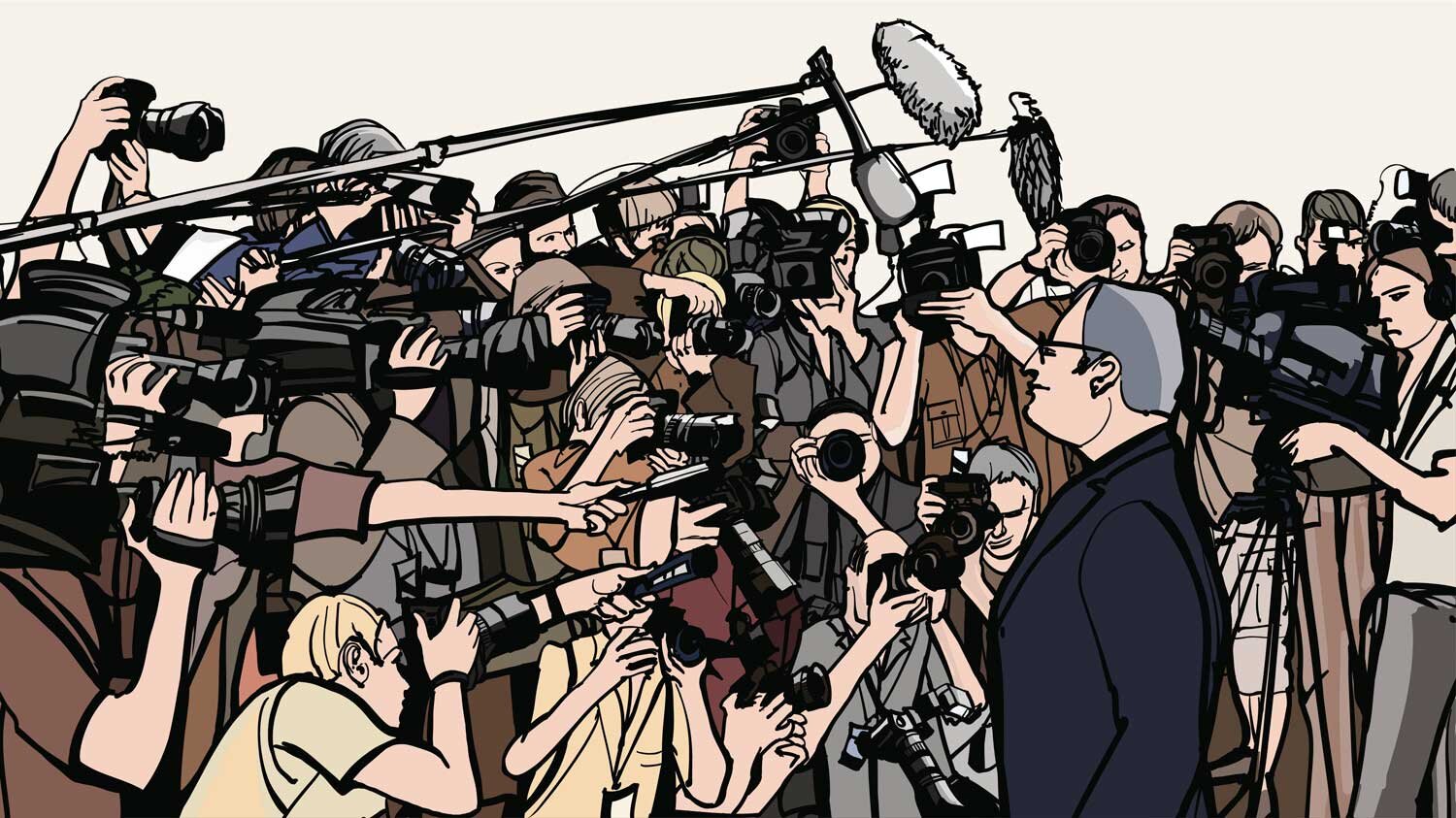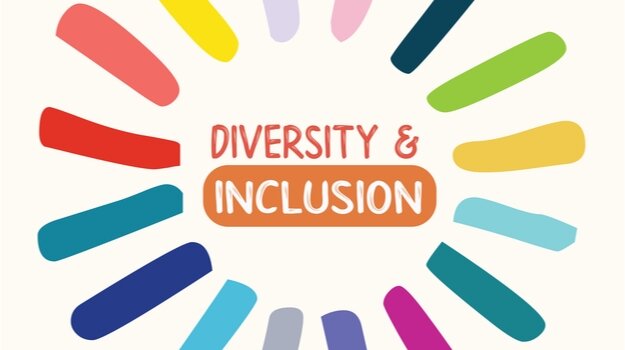Beyond The Quota: Why Diversity Matters in Media
This article is an online version of the print article for the S/S ‘20 Lexington Line edition. The print version can be viewed here!
Any person of color with ambitious goals has to wonder at some point if their race will limit their opportunities. As a 20-year-old black woman and aspiring journalist, I have always wondered how my race might impact my success in a predominantly white industry. It turns out my fears are justified.
“My first job didn’t have many other people of color, other black people, other anyone,” says Jazmine Hughes, a Story Editor for The New York Times Magazine. “The media industry is a relatively racially homogeneous space, and I often felt very alienated.”
According to the Bureau of Labor Statistics, 78% of the American workforce is white, and there are approximately 30 occupations in America that are more than 90% white. The U.S. population, however, is only 60% white.
Although the number of people of color within the journalism industry has slowly increased over the past few decades, it is not representative of the rise of minorities within the American population. According to the 2018 Census Bureau, as quoted in the Columbia Journalism Review, “Racial and ethnic minorities comprise almost 40% of the U.S. population, yet they make up less than 17 % of newsroom staff at print and online publications, and only 13% of newspaper leadership.”
Pierre-Antoine Louis, a journalist for The New York Times who focuses on race relations, has faced the intersectionality of racism and homophobia due to being both black and gay. Like Hughes, he experienced feelings of alienation under previous employers.
Source: New York Film Academy
“I worked for Good Day New York, which is a Fox Network, and I was there for a few years,” Louis says. “Had it not been for the Newsroom Editor at the time, who was a black man, I don’t think I would have been given the opportunity. When he left, it was very clear that my path there as well was not going to excel.”
Sometimes the problem is that good-intentioned people and organizations have a difficult time implementing the structural change that is necessary for marginalized groups to succeed, says Katie Agar, a Diversity, Equity, and Inclusions Program Assistant, as well as the Assistant to the Chief Diversity Office at The State University of New York at Potsdam.
“I think it’s easy to say we want to have this diverse community or diverse organization, and we want to have representation—that’s great,” Agar says. “You might have diversity on a surface level, but what does that really mean?”
Diversity can often be used as a corporate strategy by companies to meet a quota, such as having a specific number of non-white employees. But without enforcing inclusion and equity as well, minorities may feel underrepresented and unsupported.
Over time, Hughes developed a stronger sense of self and began to feel more comfortable. Nonetheless, she still finds it useful to have a sense of community in the workplace by having her identity represented through people of color, young women, and queer people.
“Diversity is intersectional,” Hughes explains. “It’s not just racial, and it’s not as simple as having black people and white people. Diversity, rather, interpasses various gender identities; various racial identities; people of various ages; different classes; different upbringings. There’s just a lot of different ways for diversity to be understood, and I hope that my definition is a generous and extensive and intersectional one.”
Like Agar, Hughes thinks structural change is critical. “I think the real way to enact and maintain change in the journalism industry is to make sure that there are not only people of color and queer people and people of various gender indentities writing for these publications, but [that] they [are] also managing them and editing them and calling the shots for them too,” she says.
Source: BioSpace
Of course, structural transformation is vital in all industries. Implementing change, however, can cause difficulty for diversity workers, since someone will always benefit from the discrimination of others. But as educator Angela Davis once said at the University of Virginia’s Excellence Through Diversity Distinguished Learning Series, “Diversity without structural transformation simply brings those who were previously excluded into a system as racist [and] misogynist as it was before.”
Agar advocates for a more diverse and inclusive system that supports marginalized groups and enables them to succeed by pushing forward different programs that enact structural change. Her dual position at SUNY Potsdam requires her to work closely with different offices and divisions. An example of a specific program she works on is the Bias Incident Response Team, which confronts bias incidents reported by students on or off campus.
“It’s still very clear, even in 2020, that the education system was designed for certain people and not others,” Agar says. “One of the things that I think is really difficult are the well-intentioned people who are still causing a lot of these day-in-and-day-out issues—people who want to argue, ‘oh, I don’t see color,’ or say they may be well-intentioned but then don’t want to take the accountability for how they come across.”
Within the education system, as well as countless other institutions, people of color experience oppression that can be blatant and obvious, as Agar describes it, but also microaggressions in the form of daily backhanded comments.
Furthermore, Agar acknowledges the role her whiteness plays in how she encounters structural racism in her position; rather than experiencing it herself, she carries the privilege of only having to witness it. She also admits to being given more credibility due to her race, which includes speaking about the black experience, as well as the transgender experience, instead of an actual black or transgender person.
This is the first step in being an ally: recognizing how your own experiences differ from others who are discriminated against based on their race, gender, or sexuality, and then using your privilege to educate others who may be willfully ignorant towards the subject. Additionally, taking action regardless of one’s identity is necessary to ensure change is being established.
Louis and Hughes both display the importance of inclusivity within their work, as well as the significance in granting individuals a platform when they are often ignored.
After Good Day New York, Louis left journalism and worked in PR for about a year before realizing his position was not fulfilling his career aspirations. A freelance opportunity for the New York Times then presented itself. Within a year, Louis was promoted to a staff position and began working for the Race/Related team.
“I enjoy writing about race and everything related to race, racial identity, and culture,” Louis says. “Also anything to do with the LGBTQ community [and] marginalized communities in general who don’t really have a voice. I love to write for them because I feel like I kind of represent them in a way, [since] there’s not a lot of LGBTQ or queer black people in the newsroom. I’m able to write about them and give them a voice.”
This is why it is crucial to have journalists of different backgrounds and identities. Diversity throughout the media industry provides a unique perspective towards subjects that may not be applicable for certain people, and I aspire to shed light on certain topics that lack recognition within my own writing as well.
As both a writer and an editor, Hughes is responsible for writing a maximum of four articles each year for the magazine. She also edits three columns: Talk, Letter of Recommendation, and Poem.
“I try to write about other people. People who aren’t me,” Hughes states. “I’m very interested in interpersonal relationships and just trying to figure out everything I possibly can about what motivates a single person: what’s appealing or attractive about that person, or what’s terrible about that person.”
Diversity needs continuous improvement and expansion within the media industry, but ensuring representation of marginalized groups within certain fields is historically complex and difficult due to hundreds of years of exclusion. However, it is important for future journalists of color to understand their dreams are obtainable despite the systemic barriers put in place to prevent their success.
“Don’t give up,” Louis states. “I learned that the hard way; if it’s something you’re really passionate about, make sure you are seen. Make sure people know who you are. Make sure people are seeing your work.”


